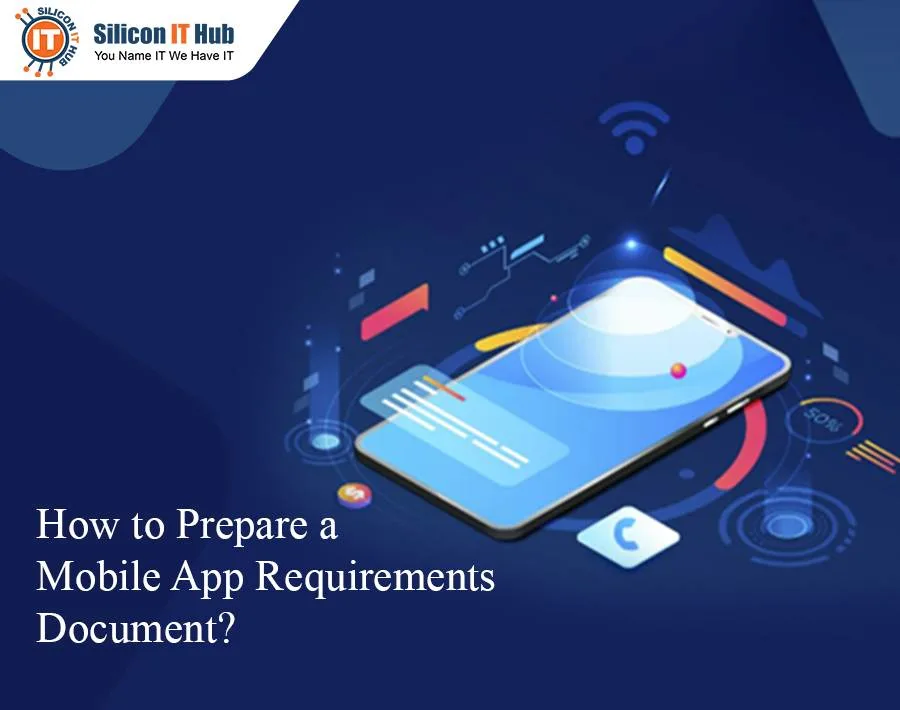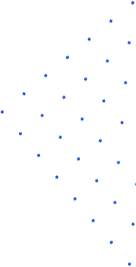How to Prepare a Mobile App Requirements Document?

Introduction
Right from conceptualizing the apps startups to developing it in the end, it is important to have a detailed vision to make things happen. Unless you have a clear app idea documented properly, you will not be able to make it presentable to the client for fundraising or for the development company whom you plan to approach for mobile application development.
For a Mobile app development Services journey, the product requirement documentation (PRD) plays a key role. It helps to define the functionalities, features, and specifications that need to be followed at every stage of development.
There are many things involved in creating a product requirement document and the essentials have been mentioned here:
Business requirements
In order to meet the objectives of an organization, certain criteria need to be met and they are said to be the business requirements. Basically, they give an idea of how the developed solution will respond to the needs of the company and its clients.
When you are writing business requirements, the following things should be included in there:
What is the main purpose of the product or the app? How do you plan to achieve that purpose?
How can it improve the current process? Will the app lead to having a new process?
Do you have to start app development from the beginning or can make use of the existing solutions?
What is the vision statement for the product?
What features the app needs?
What should be the core functionality of the app?
What is the business model?
Are there any design and branding guidelines to follow in the project?
Objectives of the mobile app
The first thing you need for your PRD is to explain what the product role will be and what will be its core objectives. When you come up with the first version of the app, the thing you need to do is to focus on a single issue first which your target audience is facing. It will be possible to come up with a strong product vision by just focusing on the core issues and based on that establish success metrics.
User personas
By getting a clear idea about the target audience and how they will be using the product, the developers will be able to look at things through their point of view and build the project accordingly. This greatly reduces the chance of the app getting rejected by the target audience. You can start by defining and describing your target audience first and mentioning their needs. The needs can then be fulfilled by building the mobile app accordingly.
When the developer is given information about the geography and biography of the users, it is important to mention the demographics of the target audience like age, gender, geographic location, occupation, and education. This will help to answer all the queries that the developer would have regarding the project.
User journeys
For each type of user which includes the regular app user, admin, guest users, etc. you should include the user flow in your PRD. It is important to know how the user is going to interact with the product right from start to finish.
Coming up with user journeys in a detailed manner is a collaborative process and you need to have the active collaboration of a developer, designer, business analyst, and a product manager. It becomes possible to look at things from the user’s perspective by mapping user journeys. In order to properly define the functionality of the product, it would be wise to establish narrative ‘touchpoints.
Describe the product vision statement
The end goal of the mobile app is clearly stated within the vision statement. Apart from that, the vision statement also describes the issue that the mobile app intends to solve here. The vision statement should explain who the intended users of the product are, why the users will be using the product, how the app will be solving the issues of the users and how the app stands out in the market against the competitors.
Feature list
You need to be sure to offer an intuitive yet simple user experience when you are releasing the first version of the mobile app. You need to be clear about the product objectives, vision, and themes when you are planning to choose the features of the mobile app. Some of the features which you need to include in your mobile app are:
Sign-up and login
Splash screen
Onboarding
Forms
Navigation
Social media integration
Image galleries
Product menus
Loyalty cards
Social feeds
Booking systems
Shopping carts and payments
Calendar integrations
App analytics
Native maps
Device hardware access
Native video
The features mentioned above are just the list of potential features that you can plan to add to your app. Based on how the users are interacting and navigating the app, you can come up with your own set of features that are critical for delivering the best user experience.
Planned monetization model
You can try out different monetization strategies for your app. The one you choose for your app depends on varying factors like your target users, type of the app and the operating system you choose to develop it. The traditional monetization models that are followed in the market are in-app purchases, pay per download, freemium, advertising and subscriptions.
Technical and product specifications
The system and functional needs that you should fulfill to let the product get desired functionalities and features can be outlined by technical and product specifications.
Things you should determine within the specifications of your app requirements based on technical or product aspects are:
What are the platforms you plan to choose for the app?
What are your current databases, servers, and services?
What operating versions your app should support?
Do you have documentation for current API/services?
What are your needs for maintenance and whether there is any need to support it in the future?
How long the app should function before going through reconstruction?
Do you currently have accounts for Google, Apple or others?
Are there any other existing credentials or new ones that you need?
Functional specifications
When we are talking about the product requirement document it cannot go ahead without having the list of features that needs to be included in the app project. Here you should come up with a detailed description of the features and about how they will be placed over different screens based on the priority. This way developers and businesses will have a clear idea about the project needs and its progress. It is important to come up with the first set of features and the ones which can be added later based on how the project scales. You will also be able to plan the replacement of any said feature with time.
User stories
The way users interact with the product is what forms the user stories. Such user stories help the developers to get an overview of how the product is as well as regarding the technical requirements. Based on that, developers can create a good business case. By using the user stories the mobile app developers will be able to get a better idea about the features within the app from the perspective of the end-users. Based on that, developers will be able to come up with the best design and content architecture which will offer excellent user experience. You can come up with different sub-stories out of a single user story and it can be used to describe the features of the app in detail. Moreover, certain tasks that have failed to be registered within the product requirements can be known to the technical leader now. Additionally, by using the stories it becomes possible to decide whether to keep the said feature in the initial release of the app or not.
Choosing a platform
The best way to develop your app is to do it for both cross-platform app development services but, most of the time this does not seem to be a feasible solution. There can be circumstances where you will have to develop the app for a platform first and later for the second one because of the limitations in terms of resources, time and money.
Android and iOS offer their set of distinctive benefits but, they basically target entirely different user bases. So you need to know which of the operating system can prove to be good for your app and its success.
Sitemaps
This part within the document will show the list of the screens included in the app along with the functionalities placed in there. It will also show the navigation within the app along with the flow of screens. Having a sitemap will help to keep all the screens arranged properly in a hierarchy. This way the relationship between the screens does not mix up in the mobile app. When you are coming up with a proper structure, it becomes easy to find the issues in user flows and components.
Wireframes
Another way to visually show the app product requirements are by creating wireframes. Coming up with a set of wireframes lets the developers get additional information about how the screens should be connected within the app, what features will be placed in there and how. What will be the user response when a new screen is opened and what will be its influence on user experience. This supplementary tool gets you a detailed idea about how the app will be along with its UI.
When you are planning to build the app, it is always recommended that the designer comes up with the wireframe, especially for the complicated areas.
Assumptions
Assumptions here work as the speculations that the project development team makes when it comes to predicting how the users are going to interact with their product. You must include some assumptions related to the technical and business aspect of the product in your document. When you are in the early stage, your assumptions can be around the experience, knowledge or information you have about the project.
Dependencies
Dependencies are certain aspects which are important for the team to follow in order to meet the product objectives. They are:
Service/API documentation
Documents, flowcharts or any information related to the product
Platform/profile/account credentials
Hardware on which the app will run or will communicate with.
Any of third party software your app may be using
Requirements of maintenance and upgrade
Completing product development is not the end of your work. You should plan the budget for a post-development maintenance of the app for system upgrade requirements and bug fixes. So when you are working on your PRD, you should include provisions for new features, product improvements, future iterations or changes based on user demands.
Constraints
Constraints are the limitations that the project development team needs to follow in terms of time , scope and budget. This can also include the requirements related to quality, resources and risk tolerance.
Submission
The document for the mobile app requirement should include all the information and the technical assets which are needed for Google Play submission and Apple’s App Store submission. You will be able to ease the process of app submission when the product is once ready for release if you can to define the requirements at the early stage itself. Based on the app store you choose to submit your app, the information and assets may vary. Some of them which work both for Google Play and Apple App Store have been mentioned below:
1. General assets
Recommended size of splash screens (Android: mdpi, hdpi, xhdpi, xxhdpi | iOS: @1x @2x @3x images)
Sizes of supported icons (Android: mdpi, hdpi, xhdpi, xxhdpi | iOS: @1x @2x @3x images)
List of supported OS versions and supported devices
Search keywords in the needed languages
App description in the needed languages
2. Google Play
Google Play Developer access
App category
App type
Store listing name
Full description
Short description
Privacy policy
Content rating
Contact email
App icon (512 * 512)
Feature graphic (1024 * 5000)
Screenshots (size depends on devices
3. Apple App Store
iTunes Connect Account access
Search keywords
App Store app listing name
Company/Entity/Name
Privacy policy
App category
Contact information
Copyright information
App store distribution provision profile
App Store distribution code signing identity
Bundle id / SKU
Marketing URL
Support URL
Demo account for reviewers
App icon (1024 * 1024)
Screenshots (size depends on devices
Tips to put together your product requirement document
You need to consider a few things when you are going through the process of writing the product requirement document. The first and very important thing is to leverage the insights and the different experiences you can hold on. Such information will help you define the different sections in the PRD in a better way.
Secondly, you need to keep all your responses and definitions above. You may feel that specific requirements are obvious but others who are reading your document may not be having the same thoughts. You should avoid making use of industry-specific words in your requirements as it makes the document hard to be read by others. The specifications keep changing and the product evolves and so others must be able to understand what you want to say through your mobile app product document.
Final thoughts
Not having a proper product requirement document can create chaos in the app development arena. Developing a clear and specific product requirement document makes things easy and seamless for the businesses and the developers. Whether it is a small project or a huge one, it is important to carry out a certain level of documentation so as to convey the idea in a better way and avoid all kinds of misunderstandings that can come up during the development.








